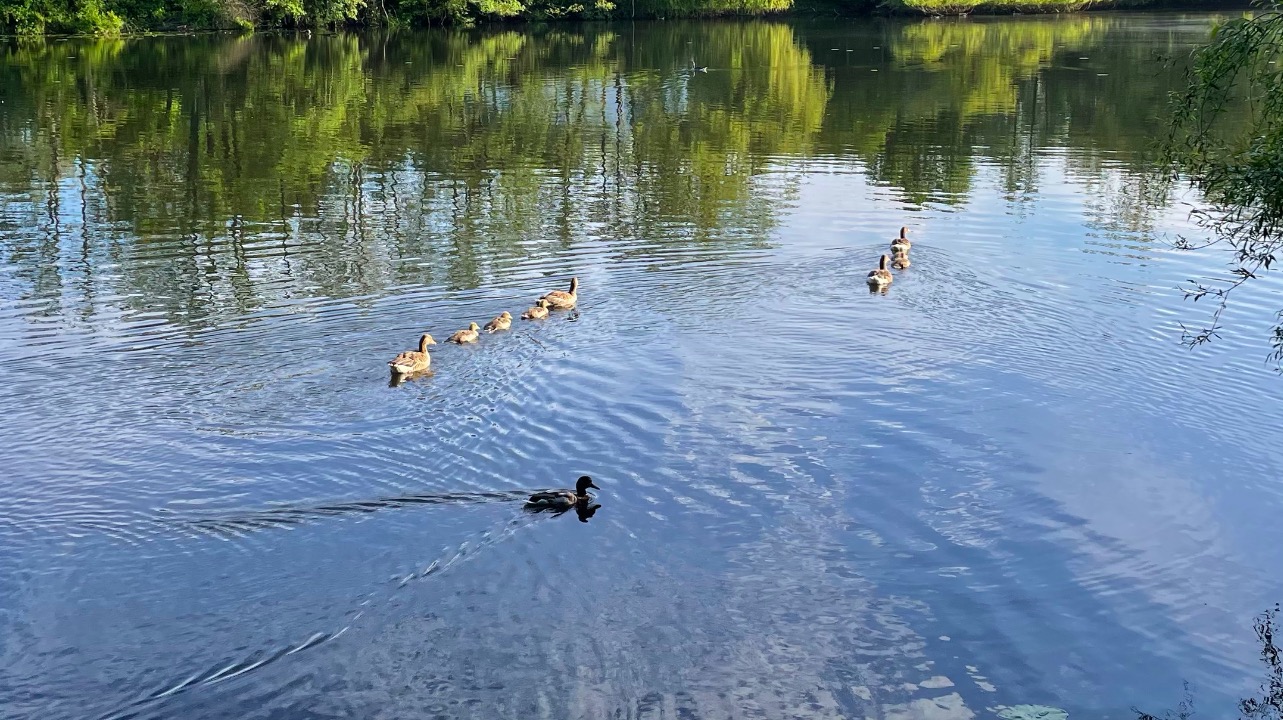
The ultimate guide to #WaveWatching, gooseling edition
I’ve been fascinated by gooselings recently, mainly because they are super cute. But I can tell you about what makes wave watching special when the waves are made by geese — it is an extra challenging type of wave watching! (Check out this post for a more general — and likely much more useful — guide to wave watching)
I dug through my phone (all these pictures are from this year, but they aren’t posted chronologically as you’ll see from the size of the gooselings) and found quite a collection. This is for you, Yasmin and Maike!
Let’s start out with a couple of pics that work well for wave watching purposes, but that already show hints of the challenges discussed below.
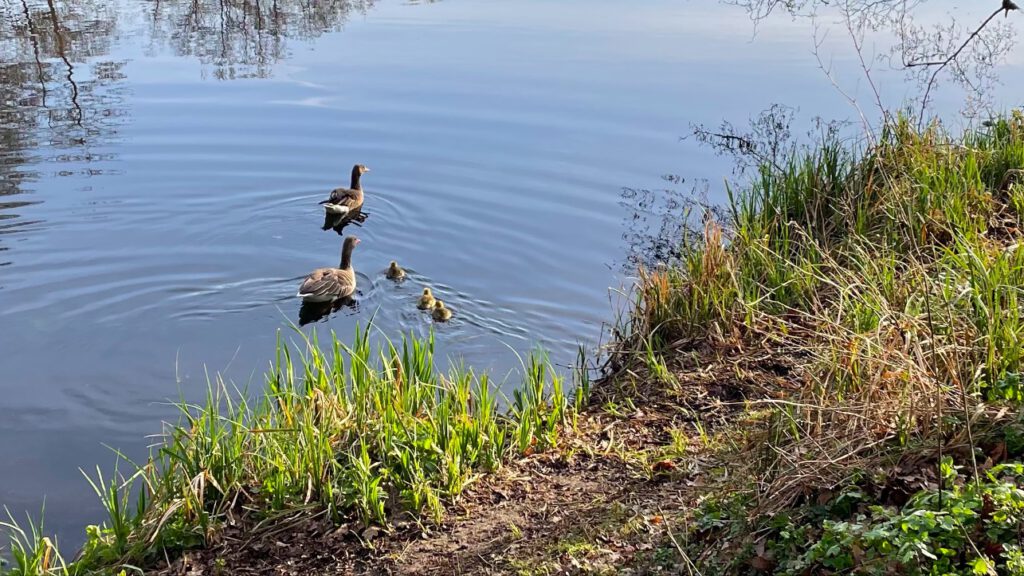
Here all three gooselings and the goose that is still closer to the shore are swimming fast and are making beautiful wakes; those feathery, V-shaped waves that are caused by them swimming faster than the speed at which waves can spread. The goose swimming in the front is swimming slower than that critical speed: See how there is a wave the goose is pushing in front of itself, but how it doesn’t break into these feathery structures? And the background wave field, those large curved waves, were likely caused when one of the large geese jumped into the water, or at least something close to the lower left corner of the picture falling at about the time it would have taken the front goose to swim to where it is now at a slow (but typical) speed.
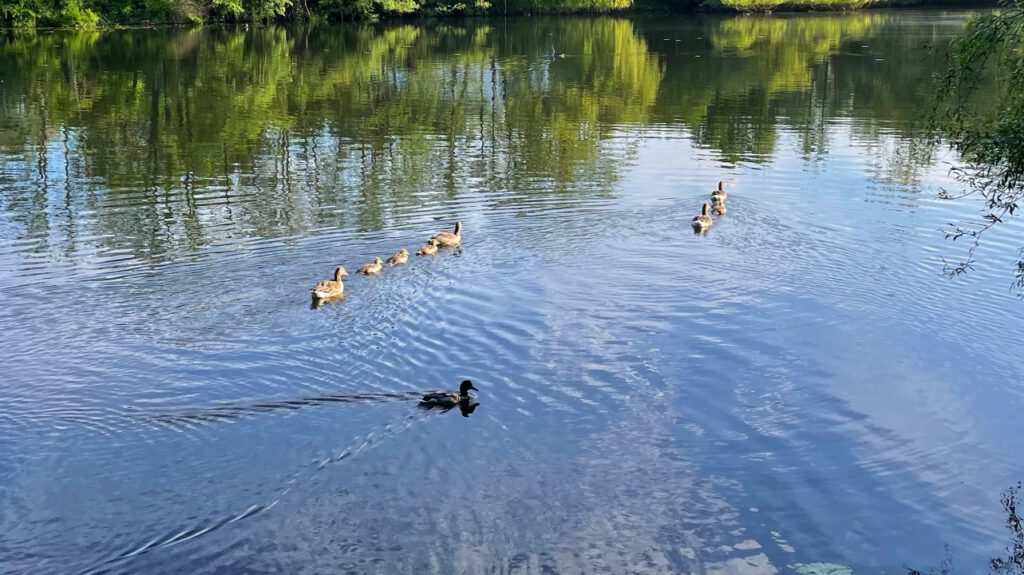
And here, the geese are doing what I’m always hoping I’ll snap a good picture of: Swimming exactly in a row. This should be energetically really good, because the goose swimming in front already creates the wake and lowers the resistance for all the other geese swimming in its wake. You see that both families are doing it in this pic, but then the duck still takes the price for the prettiest wake.
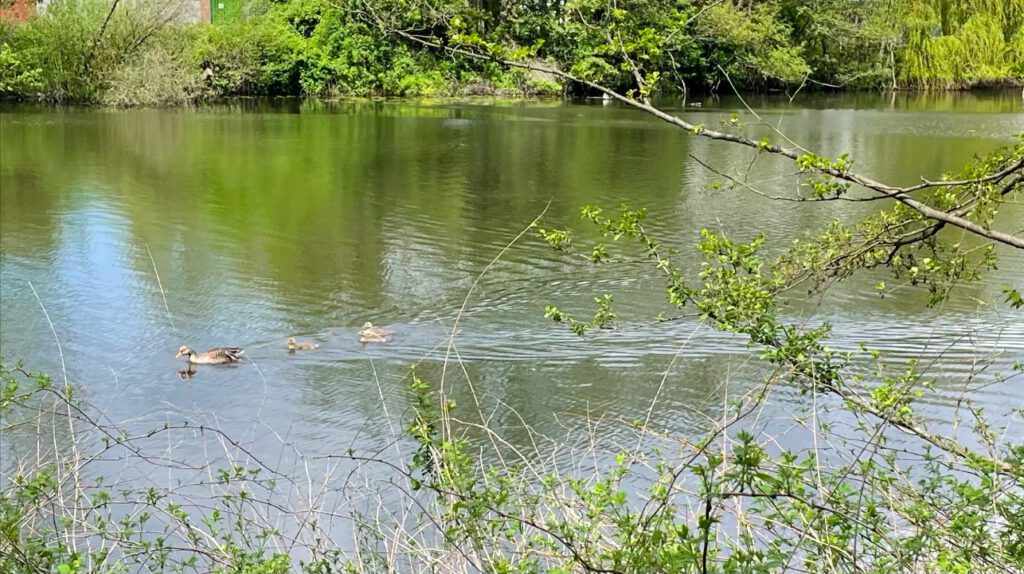
Here is another example of the front goose doing the hard work and the gooselings following in its wake. For some reason, geese never have such nice distinct wakes as ducks! Maybe it’s their bow shape in addition to their erratic swimming behaviour?
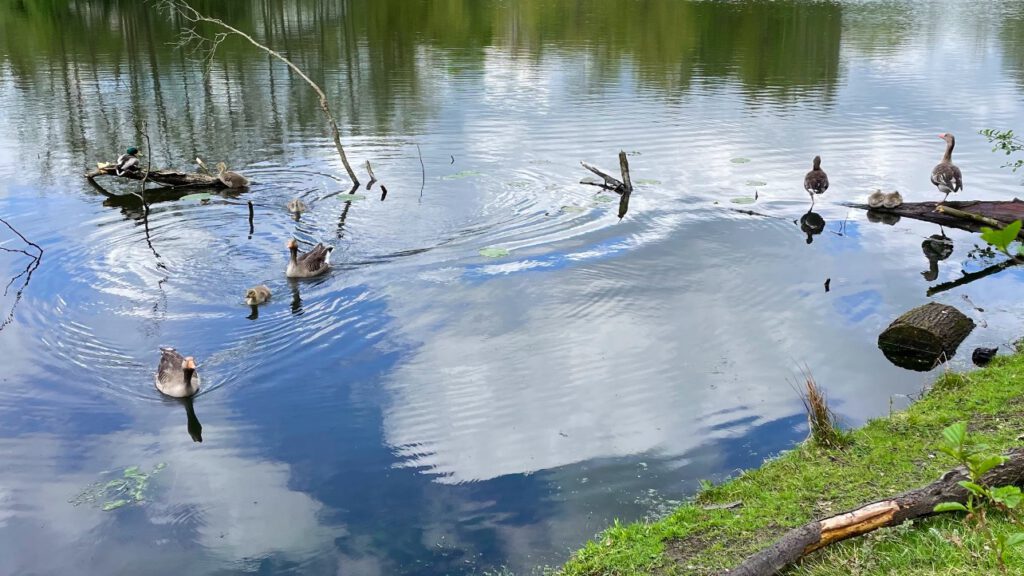
This picture gives you a glimpse of the problems we are about to discuss below. See the resting gooselings on the tree trunk in the right? Cute, but not helpful for wave watching. And the ones that are swiming, although making comparatively pretty waves, are changing speed and direction so much that the wave field looks quite messy. You can see they all started out fom the left side of the partly submerged tree trunk (the one the other family is sitting on on the right)
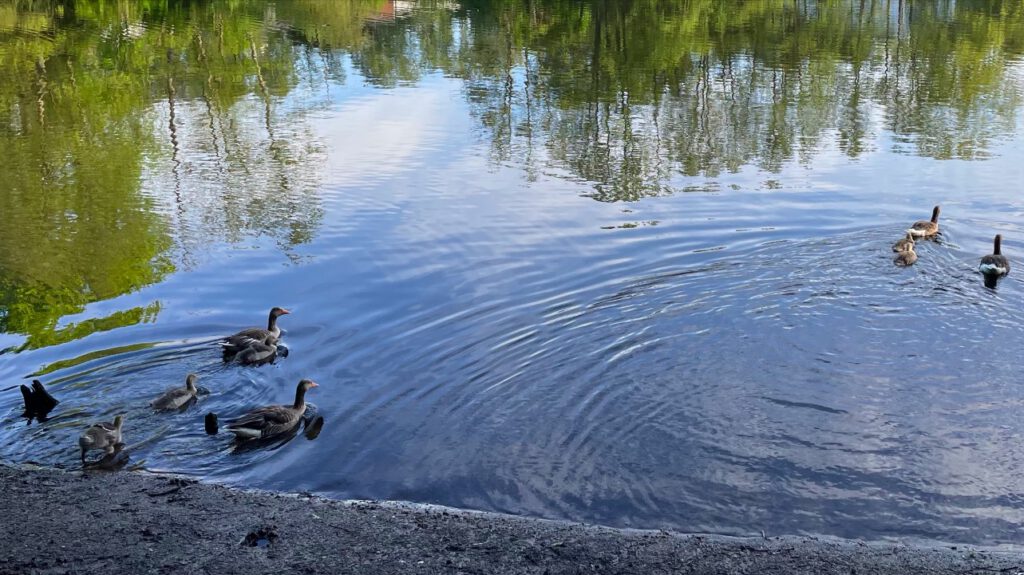
Here again: They CAN make petty waves if they choose to, but they are often moving quite erratically. Speeding up, slowing down, changing direction… But the right family is making pretty waves!
So why is it so difficult to get good pictures of geese-made waves?
Challenge 1: A lot of time there aren’t even any waves to watch
1A: Apparently, geese like to go on walks to eat grass and other stuff growing on land as least as much as being on the water. Weird, right?
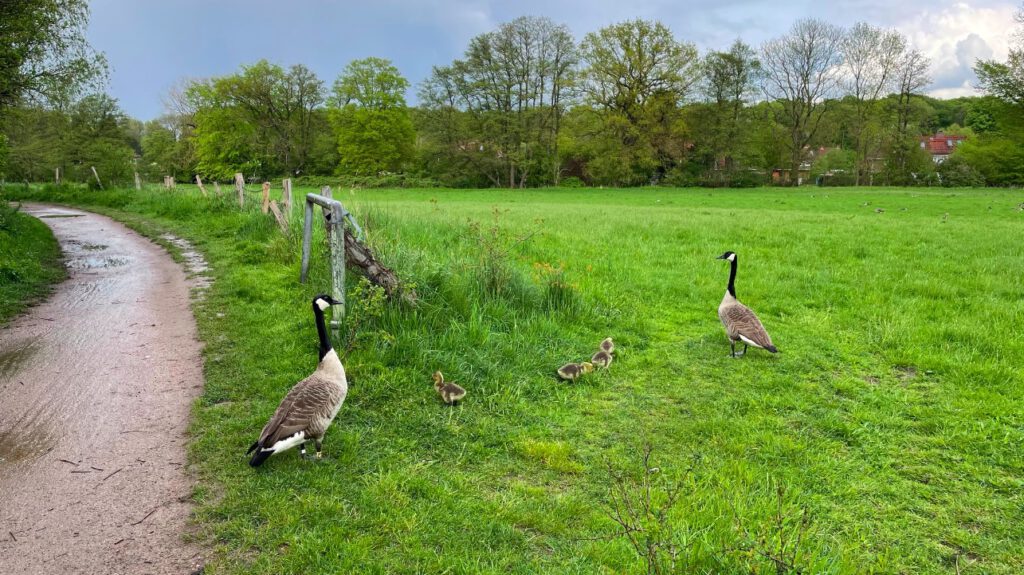
Sometimes they at least get close to the water, but getting close does not guarantee that they will actually go in!
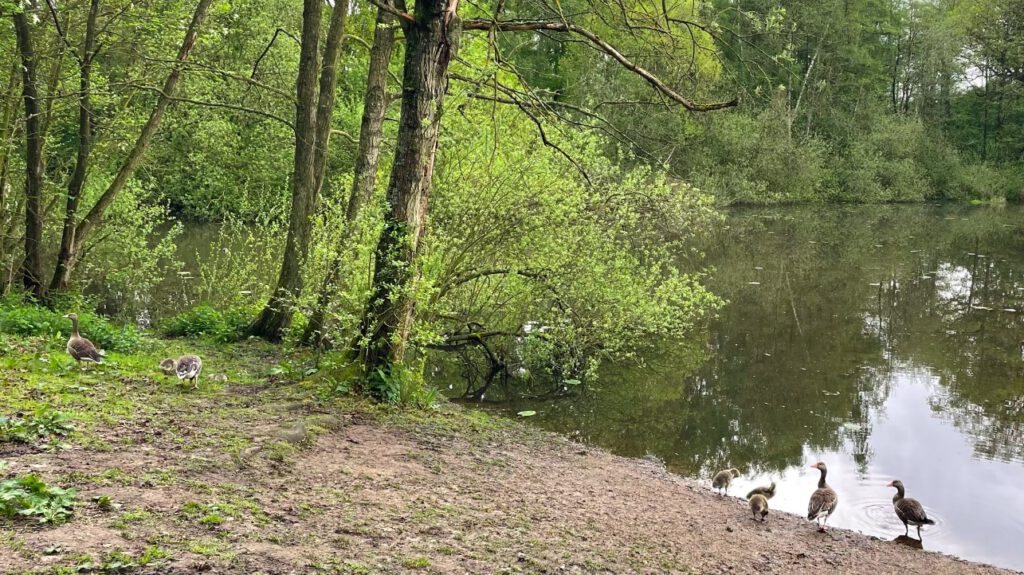
1B: Gooselings seem to need a lot of rest!
Below you see two families, one where the parents are balancing on one leg each and then the babies huddled together on that tree trunk in the water, and then the second one on land, babies again huddled together. I see them like that a lot! And at pretty much all times of day.
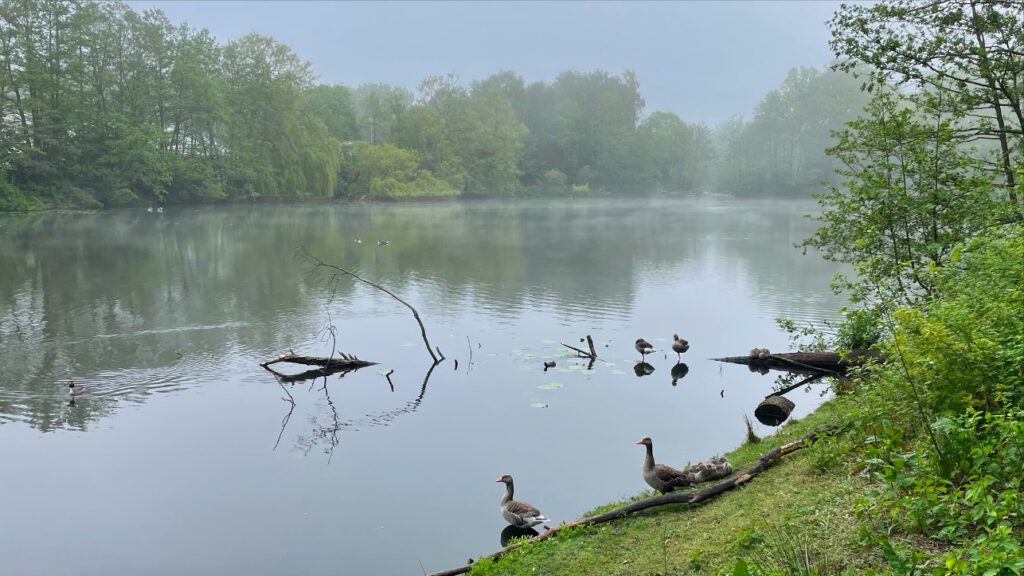
Sometimes the parents at least attempt to make some waves while the kids keep relaxing on shore…
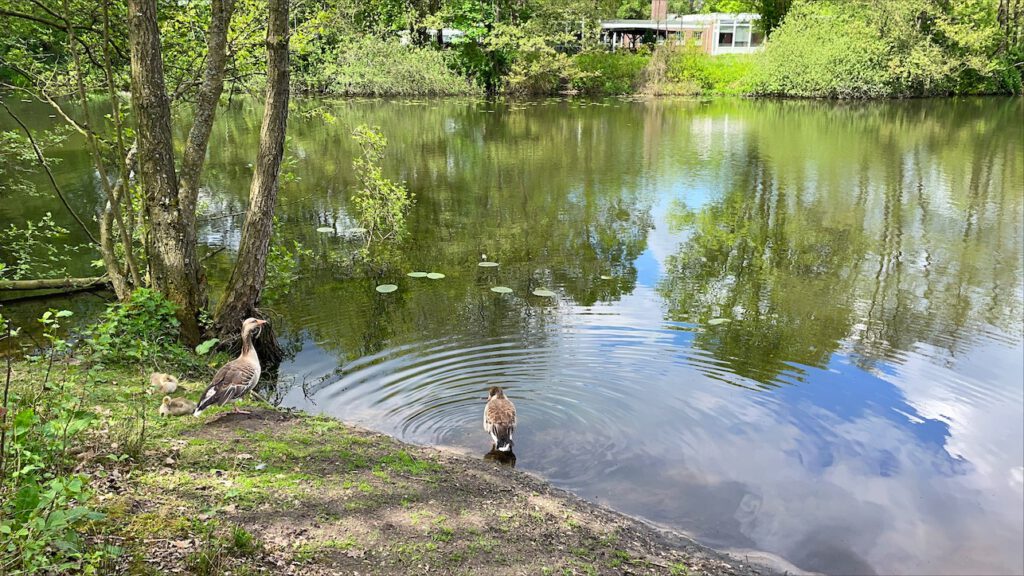
And here, at least one of the two families (the one where the parents don’t tend to balance on one leg each) is moving in the water. But they are displaying problem challenge no 2.
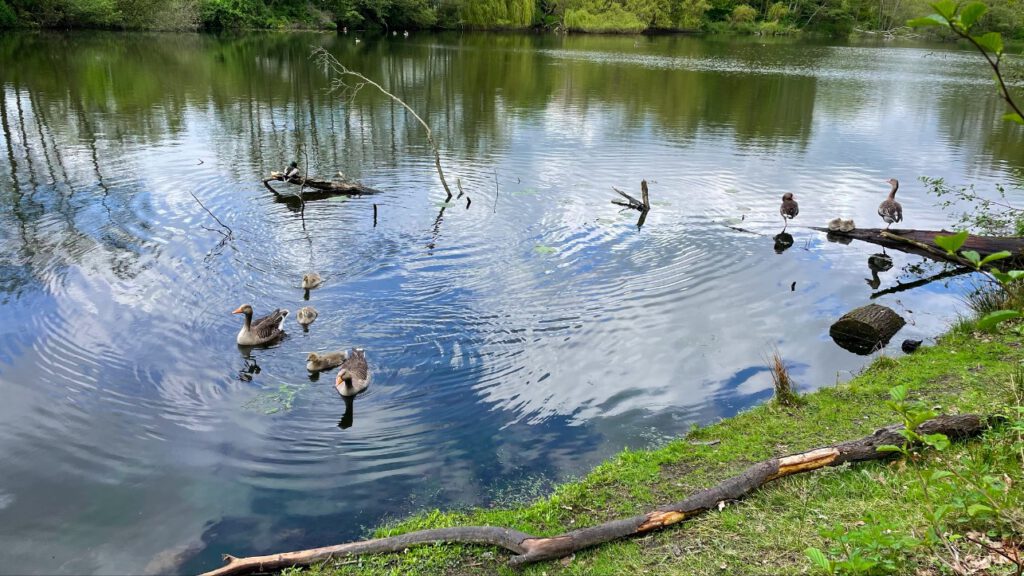 Challenge 2: Sub-critical velocity
Challenge 2: Sub-critical velocity
Geese often just swim too slowly for nice wakes to form. They would need a super-critical speed, i.e. they need to swim faster than waves can spread, for a 2D Mach cone to develop (which isn’t really all that fast, ducks do that all the time!).
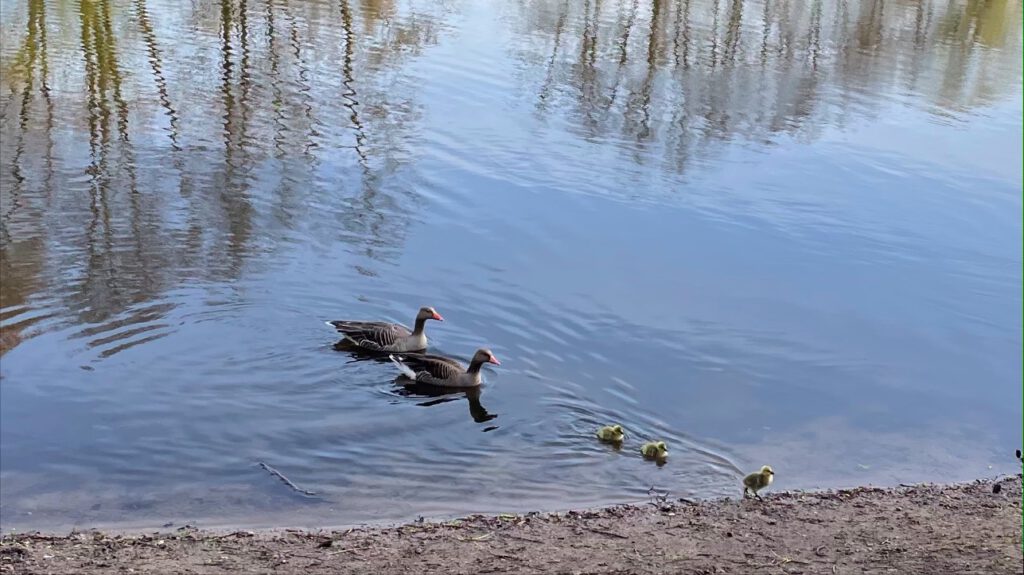
See how all the baby geese sped up when they got close to the shore and clearly wanted to get out of the water? The only places where wakes are visible are really close to the shore
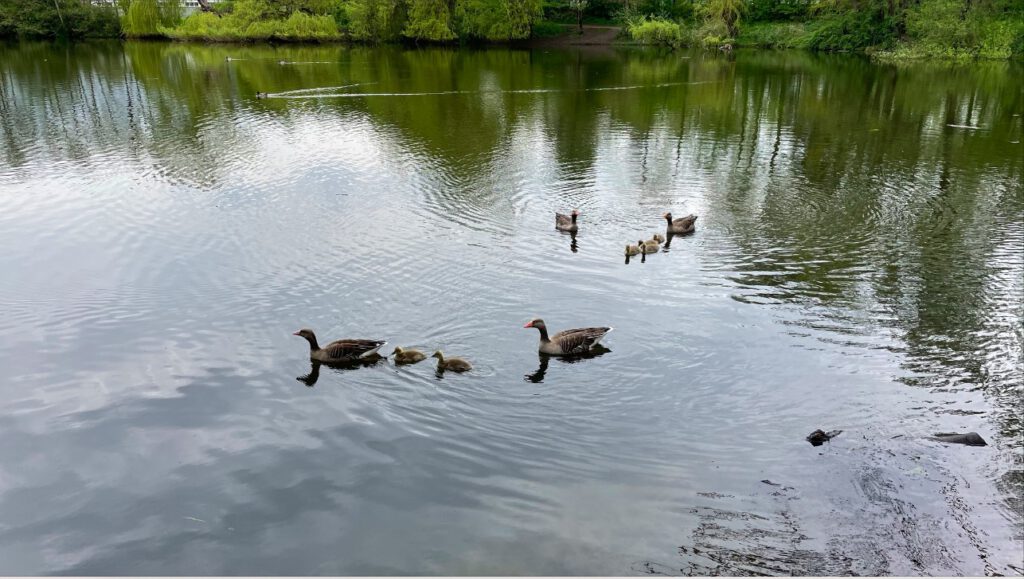
In the background, a duck is demonstrating how it’s done, but the geese are mooving sloooooowly. Only the gooseling swimming right behind the front parent temporarily sped up enough to even make a nice wave. And for the family in the background you can see remnants of a wave from the left parent, but that’s all.
Challenge 3: Erratic behaviour
In contrast to ducks, geese don’t just swim straight forward at a reasonable speed. They constantly change speed and direction!

Yes, it’s cute that one of the babies first needs to put its head under water, while othes are still undecided on whether they’ll actually join the rest of the family, buuut…

Here is a good example of how geese swim, visible especially well from the baby in the back, but also from all the others. They do short bursts of swimming really fast and then swim slowly for a little bit, before speeding up again for a short while.
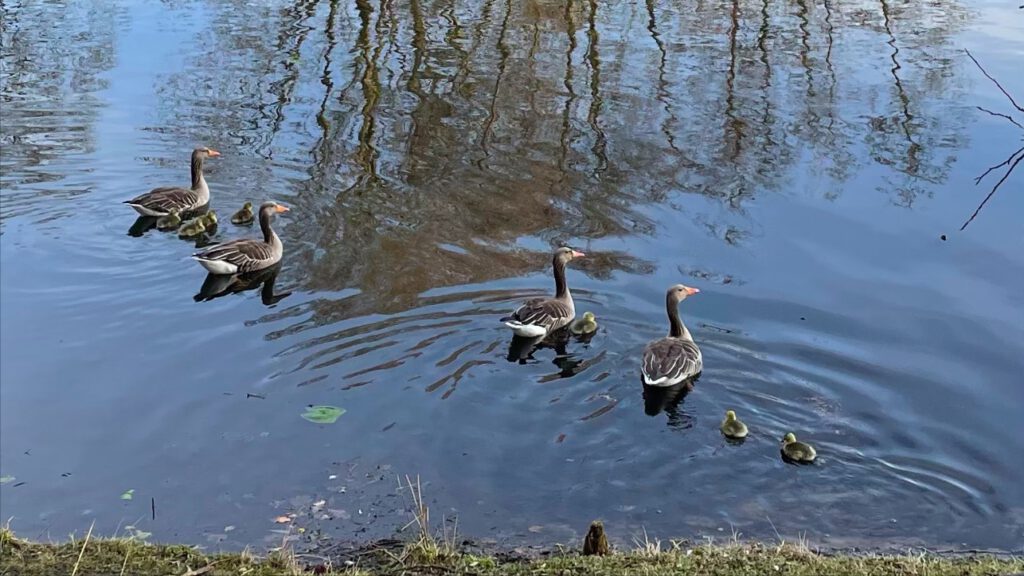
Or they just pretend to be assembling at a starting line, but then never start the race!
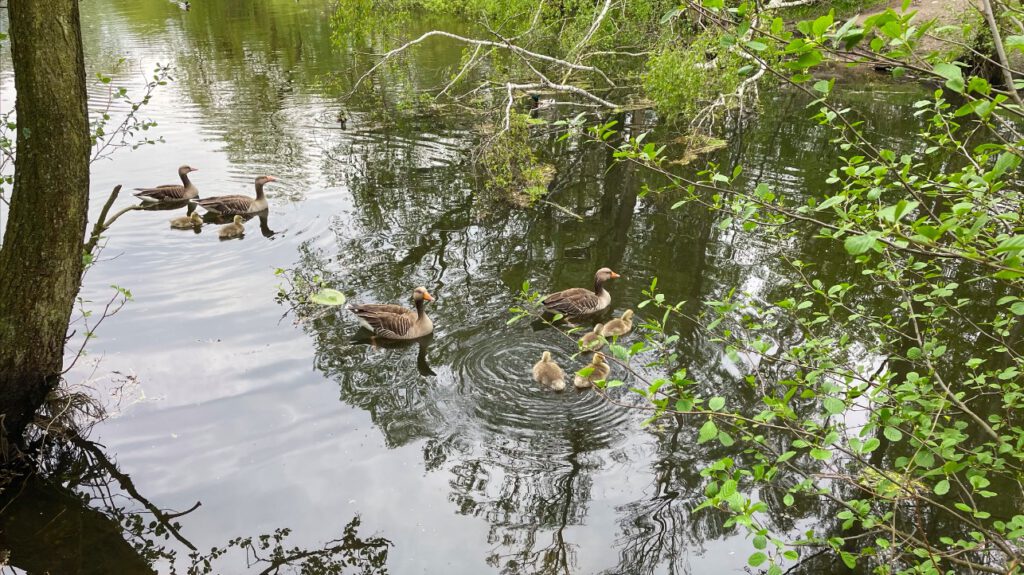
Cute gooselning making cute ring waves by bobbing up and down in one place, but what are all the others doing?
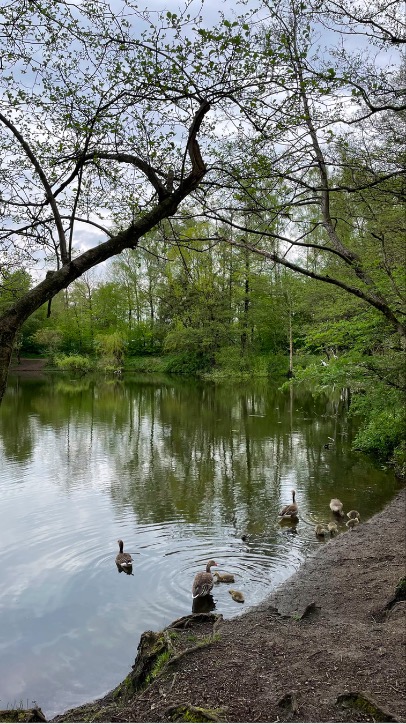
Again. Playing in the shallow water, making nice ring waves
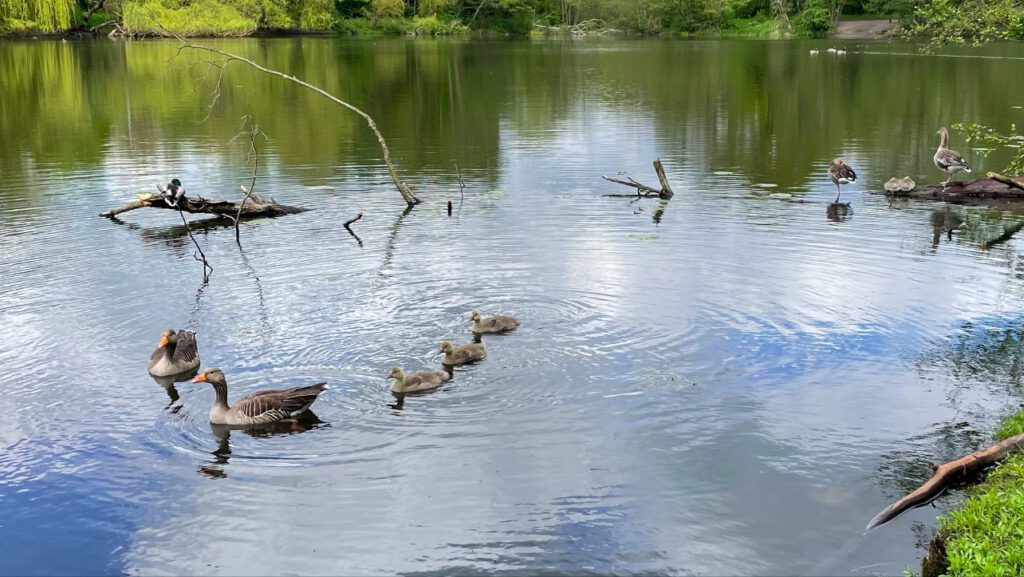
Are we going to swim somewhere? Gooselings are lining up, but right now the speed is still suuuuper slow (as can be seen from the ring-shaped waves radiating from each animal, rather than V-shaped waves)
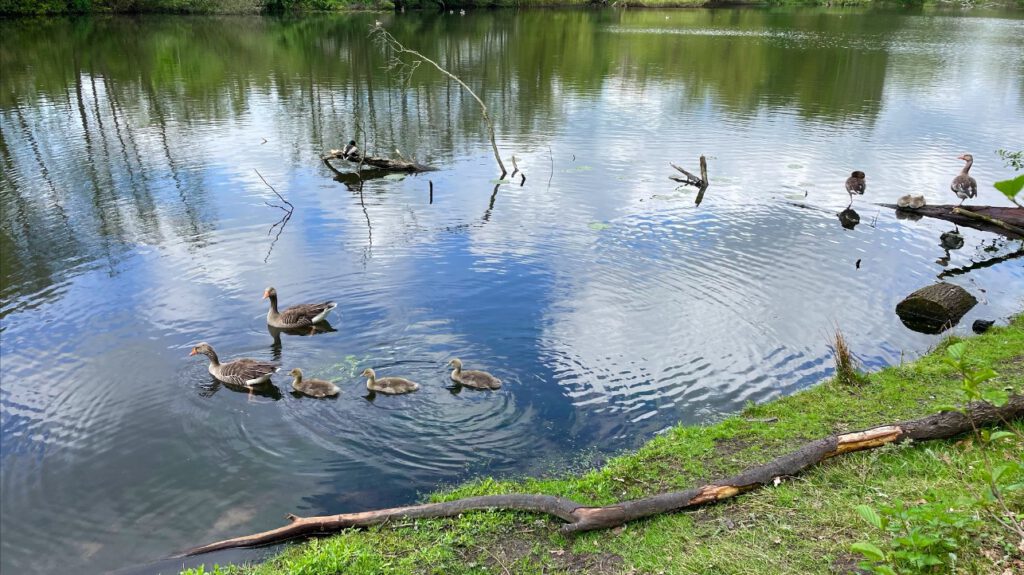
Same as above. We are probably planning to go somewhere, but slooooowly!
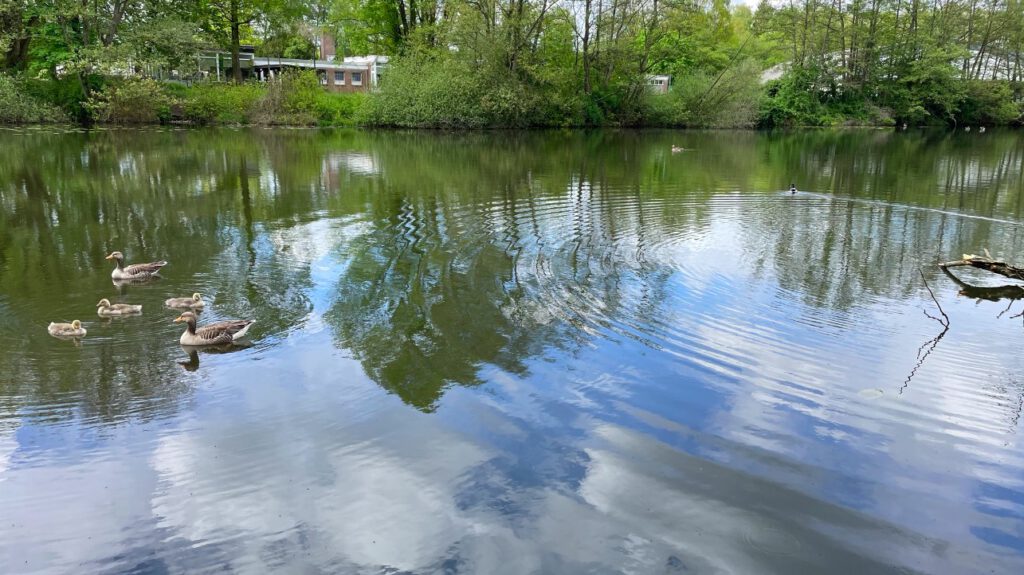
Not even facing in the same direction! But maybe the ones looking away from the direction the parents are facing is actually admiring the duck’s wake?
Challenge 4: Too far away
Maybe that’s not really on the geese, but often when they ARE making nice waves, they are just out of reach of my phone’s camera.
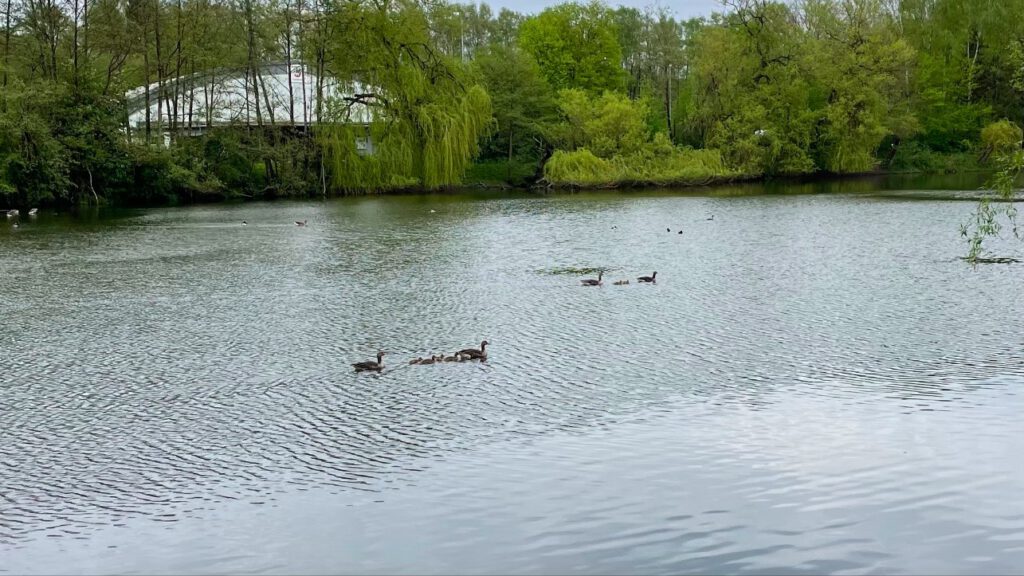
Why I took this pic? Because it was nicely visible that it really helped the gooselings to swim right behind a parent, in their wake, against the wind and the waves. For the family in the back, you can still see the wake all the way to the left edge of the picture!

And here you actually see both families’ wakes

And here you can even see that the wakes are V-shaped, with the gooselings following in the turbulent water right behind a parent
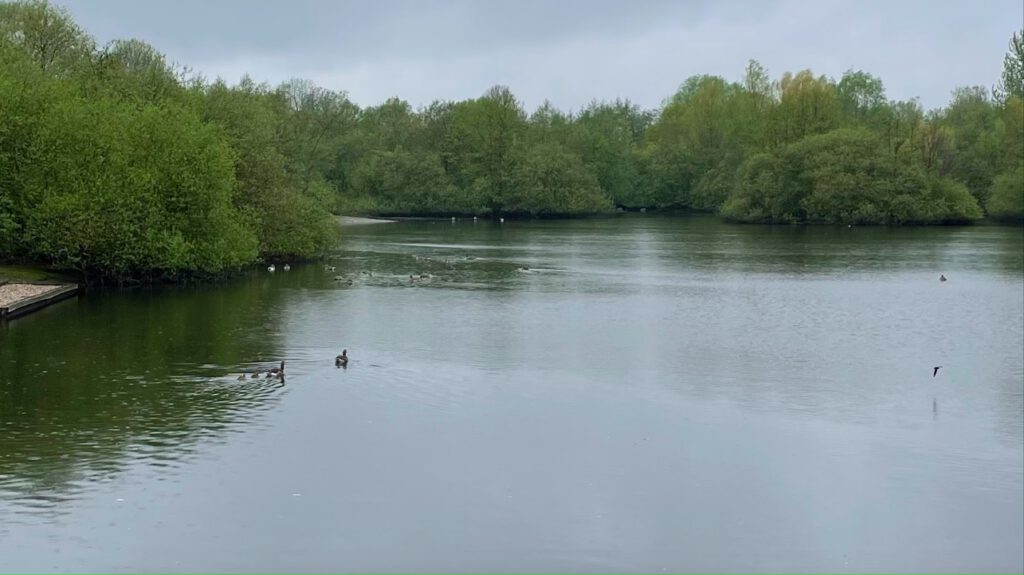
Same here: A V-shaped wake and all the babies lined up right behind the parent
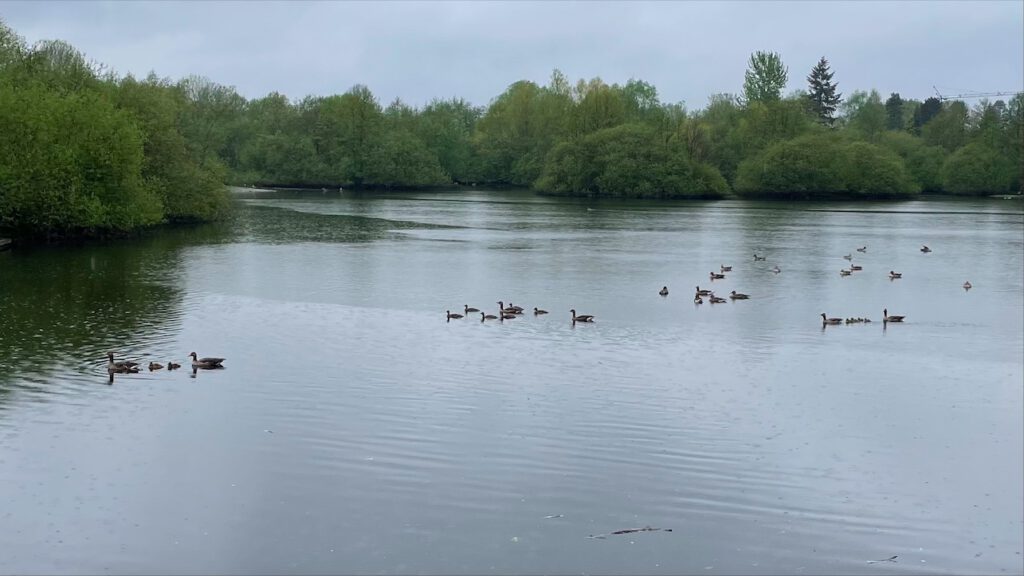
So many geese, so few distinct waves!
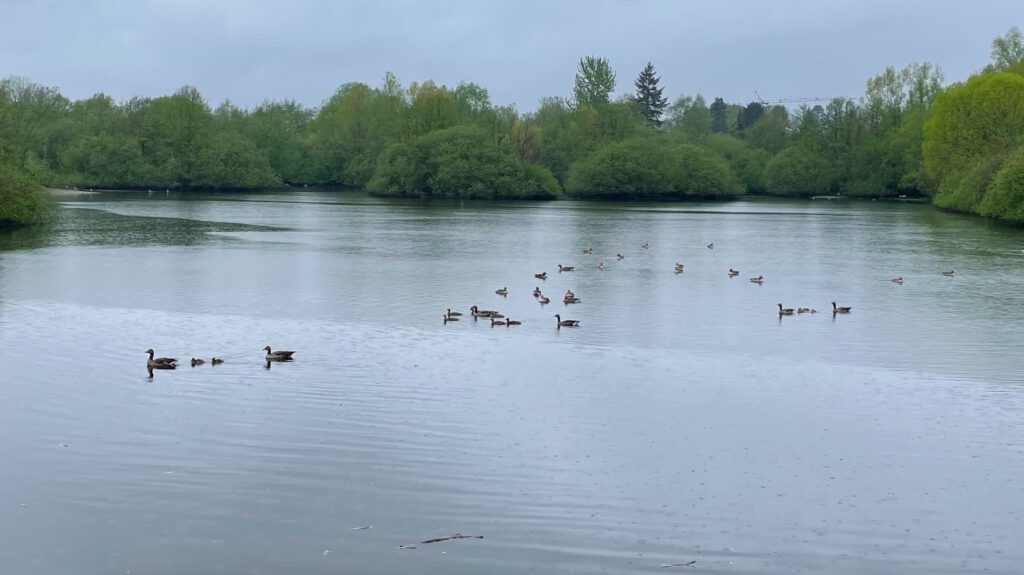
What I find interesting here is the wake the family in the foreground is making, but also the change in surface texture between the sheltered areas in the foreground and along the edges of the pond, and the more windy part in the middle. Also, can you see all the impact craters from rain drops? The things I do to get wave watching pics…
Anyway, it’s fun to try to get good wave watching pics when the animals are behaving so unpredictably! With weirs or ships and even ducks it’s a lot easier, but then maybe a new challenge every now and then doesn’t hurt either :)
jessicakleiss says:
Hi Mirjam,
Do you have any good references that describe the dynamics that produce the V-shaped wake?
Mirjam says:
Hi Jessica,
Unfortunately I don’t have the one single reference for it (in my head it’s just an accumulation of lots of different things I have heard and read over the years), but since I am referring to the V-shaped wakes all the time, maybe it’s time to write it up myself :)
Kjersti Daae says:
Haha – Love it!
Yasmin says:
I feel very honored! Thank you for the interesting crossover of cuteness and wavewatching